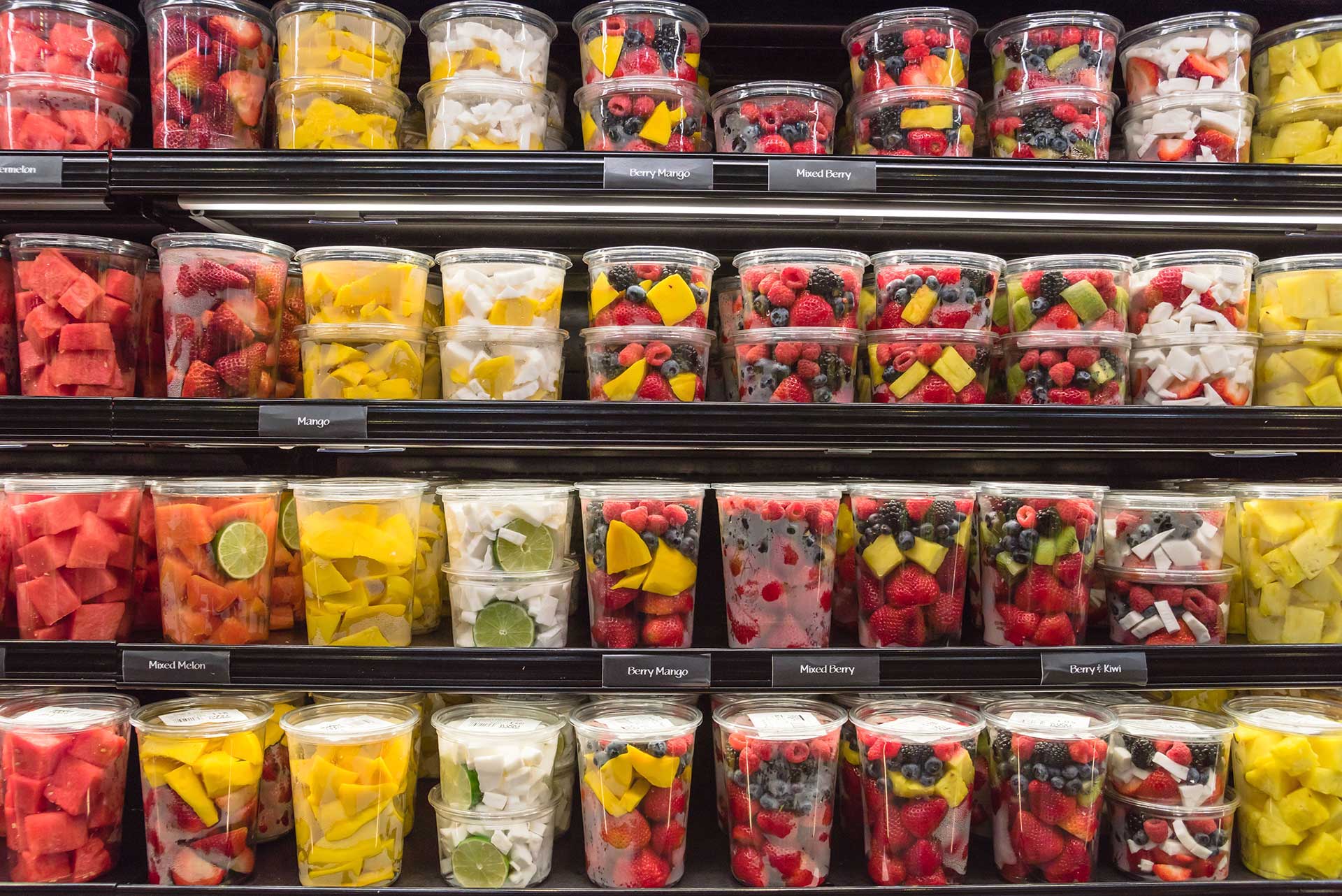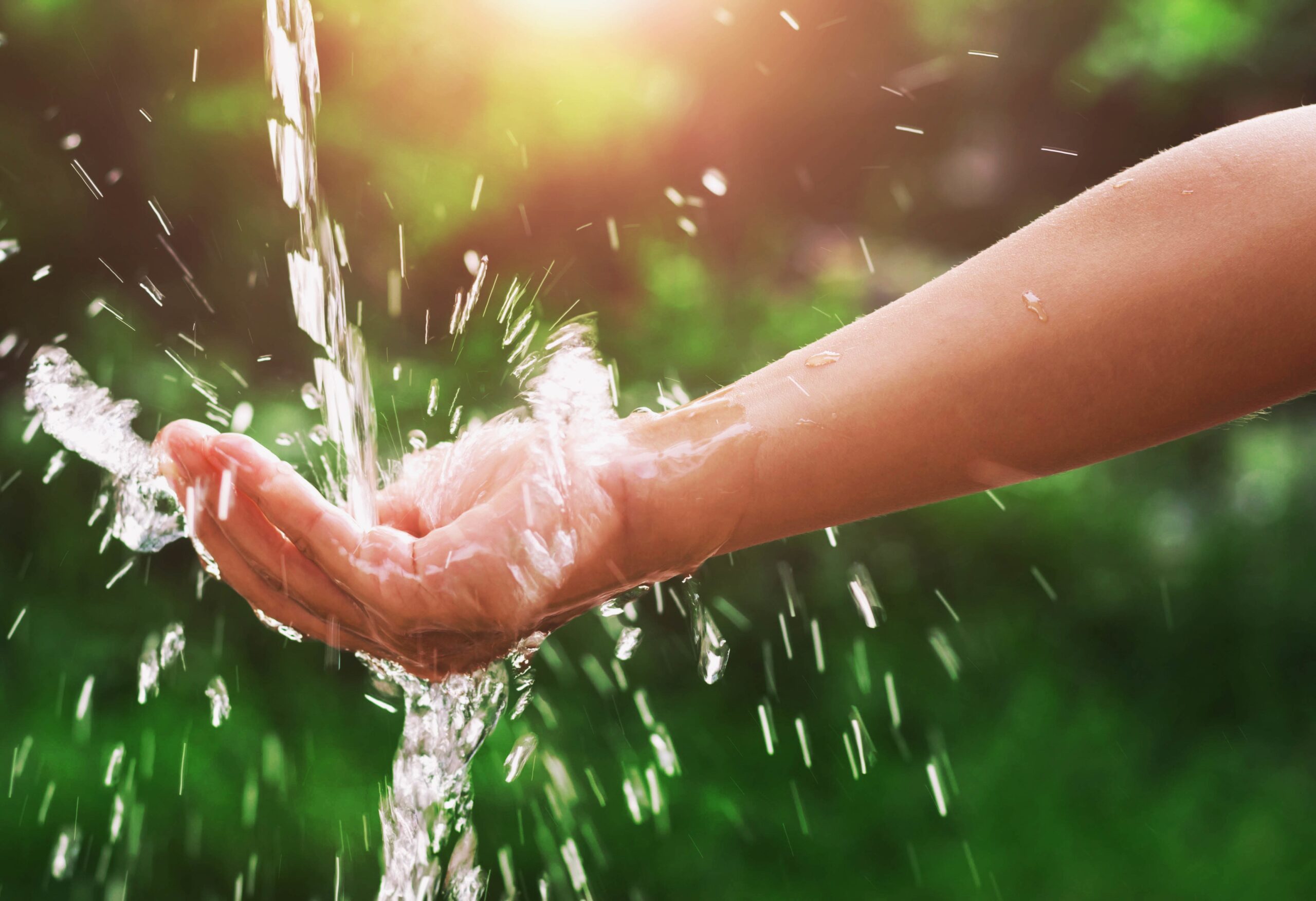The Water Footprint of Your Plastic Bottle
As consumer products go, plastic has become ubiquitous, and for good reason: it is an extremely useful material that has made life more convenient and in some cases, safer, but plastic has a huge environmental footprint with high costs to its creation. While the many activities that keep humans alive and advancing — agriculture, manufacturing, power production — require lots of water, plastic production is often, by design, one of the most unsustainable, including the huge amount of water required to produce it.
There are lots of reasons for the growing backlash against plastic food and beverage packaging, including bottled water. One of the biggest is the dawning realization that plastic waste is now truly found everywhere — from the guts of birds and the flesh of fish to the noses of turtles. There is also plastic’s large carbon footprint. But it should come with accompanying concern about how much water it takes to make the plastic itself, especially when production happens in water-stressed areas.
Plastic is Everywhere
The sheer amount of plastic that infiltrates people’s lives and Earth’s spaces is massive. Geyer et al., estimated that, between 1950 and 2015, a total of 8.3 billion metric tons (MT) of virgin plastic was produced globally. Of that, approximately 6.3 billion MT was wasted, with the majority ending up in landfills and the natural environment, while only 9 percent was recycled.
On a geological time scale, so much plastic has been deposited on Earth since the start of the plastic age that we could call the stratum the “Pampers layer.”
Plastic in the Water
With plastic production ever increasing as plastic and oil companies ramp up, polluted waterways might be its most conspicuous and ubiquitous symbol. This environmental scourge clogs the smallest streams, clings to vegetation in overlooked wetlands and disintegrates into tiny bits as it flows to grand rivers and high seas. A study found that in 2010 — only a single year — 8 million MT of plastic waste was swept off the land into the ocean due to poor waste management practices and another 150 million MT was moving through marine ecosystems.
Water in the Plastic
Less understood is plastic’s substantial water footprint. Accounting for all the water involved in production underscores how plastic — especially the single-use plastic created for beverage bottles and the rest of the food packaging industry — encourages consumers to pour good water down the drain.
Each step in the life cycle of plastic, from the extraction of oil or natural gas at the well pad, through the many steps that result in the resins that become various types of plastic, consumes water. The water footprint accounts for the total volume of freshwater consumed in the entire production process.
Within this context, “water consumed” refers to the water permanently withdrawn from its source, or “water that is no longer available because it has evaporated, been transpired by plants, incorporated into products or crops, consumed by people or livestock, or otherwise removed from the immediate water environment.”
PET Plastic Production
Polyethylene terephthalate (PET or PETE) plastic – the source material of water bottles, soda bottles and more — makes up 10.2 percent of global plastic production. Because PET is a petroleum product, its water footprint includes the water consumed in the processes of extracting, refining and manufacturing of oil and natural gas, which produces the raw material that becomes PET resin pellets. The final step includes molding these pellets into plastic packaging.
To calculate the total water footprint of PET plastic, both the “blue” and “grey” footprints have to be assessed, which means taking into account not just the water consumed during creation of the raw material, but also the water required to reduce the thermal pollution from cooling water heated during processing.
- Blue Water Footprint
- The water consumed to produce the raw material, which comes from surface or groundwater sources, is called the blue water footprint. This type of water consumption includes water that is evaporated and lost to the immediate watershed.
- Grey Water Footprint
- The water required to reduce pollution associated with PET production, in this case, thermal pollution, is known as the grey water footprint. Water that is heated during manufacturing is considered thermal pollution if it discharged into waterways, so cooling water is added to reduce the temperature of discharged water to meet the standards of the water body.
In a 2011 study, researchers affiliated with the Water Footprint Network estimated the blue and grey water footprints of PET by analyzing the steps by which raw material becomes PET plastic resin. The estimated blue water footprint of the “oil to PET” steps was 2.64 gallons of water per pound (10 liters per kilogram). Adding the grey water footprint caused the water footprint to jump to 28 gallons per pound (235 liters per kilogram). Based on these numbers, it takes about 1.4 gallons (5.3 liters) of water to produce a typical single-use water or soda bottle.
According to the plastic waste study referenced above, from 2002 to 2014 approximately 3.83 billion MT of PET plastic resin was produced worldwide — this is equivalent to 29,000,000,000,000,000 plastic water bottles. The blue and grey water footprint for all that PET works out to about 91.8 billion m3 (which is like filling 693 billion bathtubs full of water).
The Plastic Supply Chain and Local Water
Water footprints account for water use along entire supply (or production) chains, which can be messy just to map, let alone assess. Take FIJI Water, for instance. Notorious for being a luxury good with a troubling profile, FIJI Water’s plastic bottle life cycle exposes a predicament for consumers who think they are buying a product that is healthy but in fact, could be quite damaging to the environment. The PET resin is reportedly made in China, the leading resin-producing nation, where it is then shipped to Fiji, molded into the signature square bottles, filled with Fiji artesian water and exported around the world. China faces serious water scarcity and water pollution problems throughout the country, both of which are caused or exacerbated by manufacturing. Supply chain disruptions can have severe consequences, even for plastic resin production, as China’s severe response to halt the spread of the novel coronavirus shows.
When people in Los Angeles, Paris and Singapore sip on genuine Fijian water imported thousands of miles from the tropical island, they are also consuming the virtual water it took to produce resin from water-stressed China and bottles from Fiji.
Here in the United States, it is increasingly likely that the resin used to make plastic came from the Texas Gulf region, which often experiences its own water stress. West Texas is in the midst of a boom in which record amounts of oil and natural gas are extracted using hydraulic fracturing (fracking) techniques, with industrial Texas Gulf hubs like Houston and Corpus Christi producing more PET resin than ever before.
In the Corpus Christi area, water resources are already at risk from scarcity and pollution, and the problems are being compounded by the development of the burgeoning petrochemical industry. Fracking has a notoriously large water footprint, and industrial expansion around Corpus Christi now includes two thirsty petrochemical facilities that process the building block components of plastic using fracked oil and gas.
Anticipated to be among the world’s largest plastic plants, these facilities operate in an area that regularly suffers from drought and deluge, both extremes expected to intensify with climate change. Just one of the facilities — the huge ExxonMobil ethylene cracker — is projected to use around 18 million gallons of water per day drawn from the Corpus Christi supply, in conjunction with water from the nearby towns of Portland and Gregory. Water scarcity concerns led the Port Industries of Corpus Christi to start planning the development of two desalination plants to meet regional freshwater needs. Provoked by the ExxonMobil cracker development next door, concerned citizens and environmental groups in Portland banded together to protect their local water and air
Think Globally, Drink Locally
A paper by Vorosmarty et al., published in the journal Science explains that, while water impacts are most sharply felt and managed at a local level, in an era of international supply chains, local water problems may be impacted by global systems and processes. Because so much water use and pollution occurs from trade that moves water “virtually” around regions, countries and continents, local water mismanagement can lead to clashes over water resources. In India, for instance, soft drink giants PepsiCo and Coca-Cola have bottling operations with a long history of using and polluting residents’ scarce water supplies. While the companies slurp up loads of water during the soft drink-making process, the finished beverages are sent outside the community and around the region. This becomes even more contentious during times of drought for these already water-scarce areas of India.
Vorosmarty goes on to say that global trade can “[outsource] environmental problems to countries with lax regulation[s] that host highly polluting manufacturing or agriculture.” Not only can environmental problems be outsourced from one country to another, but also from one region to another within a country, particularly to places that are more open to resource exploitation or that have accommodating regulatory conditions.
In the case of plastic production, if it occurs within a stressed watershed, and if water management within that watershed is suboptimal, then consumers who reach for those plastic products are unwittingly contributing to unsustainable water use. This does not mean the problems can be ignored.
Although the issues might be hidden from consumers’ view because they are a town or continent away, the risk remains for producers, their supply chains and all those who rely on impacted watersheds. Governments, companies and consumers alike must take the water issues that come with upstream plastic production as seriously as they take the plastic pollution floating into their rivers and seas.
More Reading
The ins and outs of vegan hot dogs
April 16, 2024
Jamie Loftus and ‘the naked truth about hot dogs’
April 16, 2024
Nearly a year after USDA approval, lab meat is still off the menu
April 10, 2024
Sourcing more sustainable flowers
March 27, 2024
‘Barons’ author Austin Frerick explains why so few companies control so much of our food
March 21, 2024
How a Kroger-Albertsons merger could affect grocery prices
March 6, 2024
The 'unseen hands' of the food system
February 27, 2024
Can new rules help the organic label get better on animal welfare?
February 8, 2024
Can contract livestock farmers find a second act?
January 24, 2024
Prison food is a national crisis. Sustainable sourcing could be a solution.
January 16, 2024


